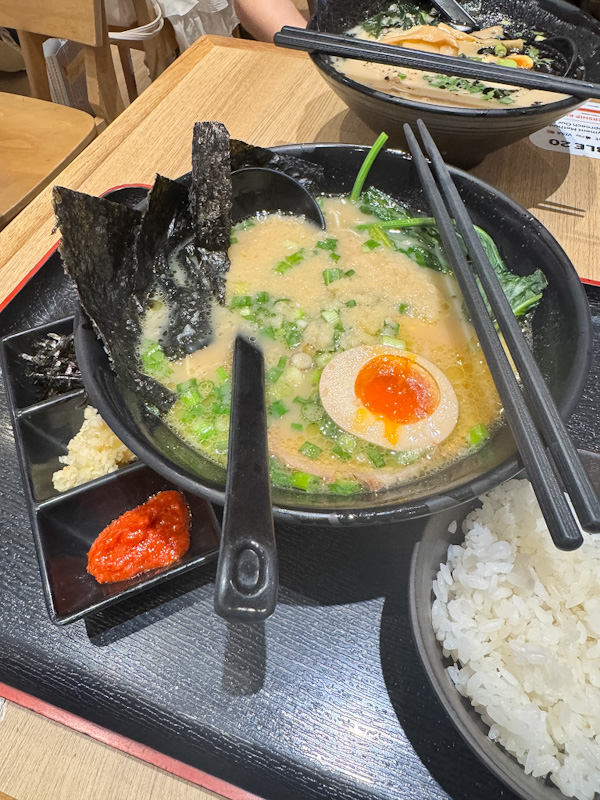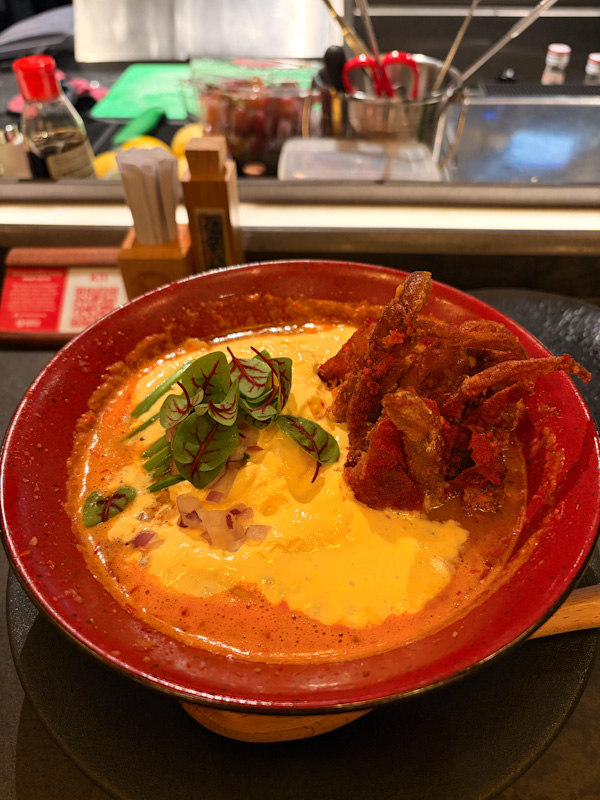WHAT WE ATE
- Tsukemen – 90/100, Japan
- Ramen – 70/100, Japan
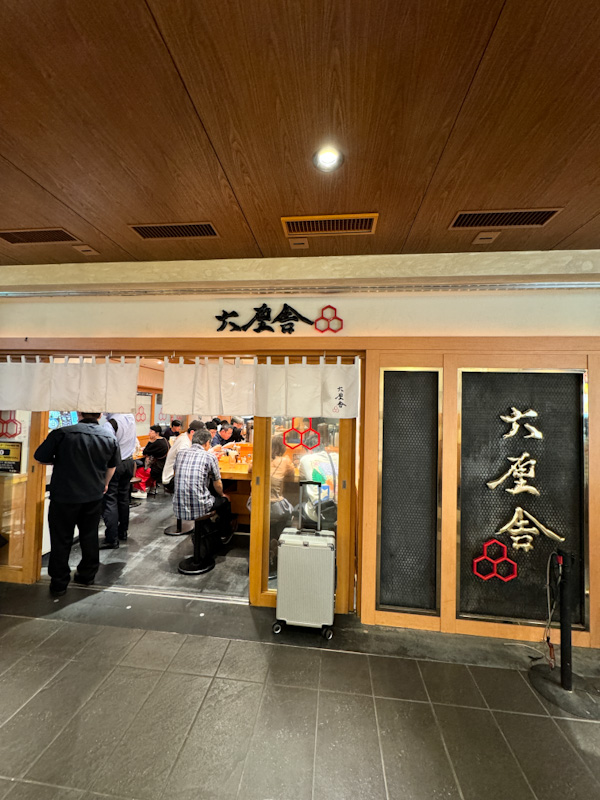
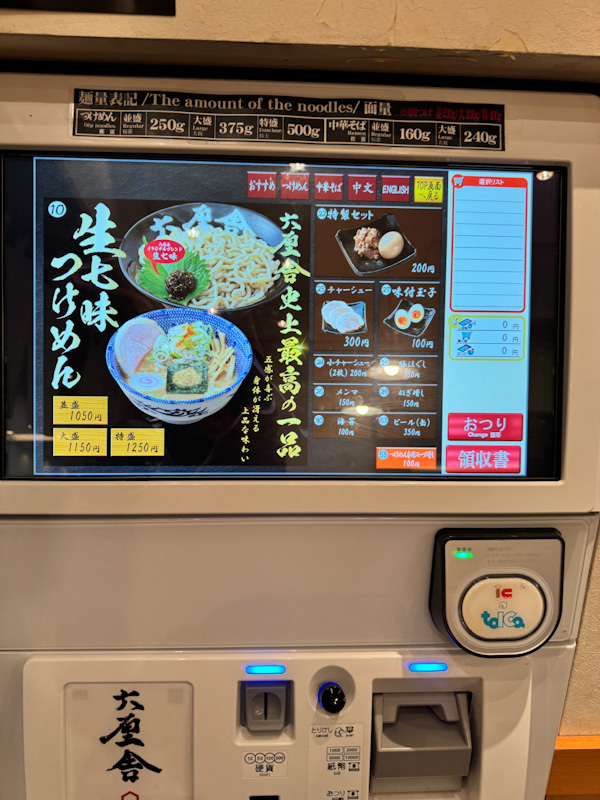

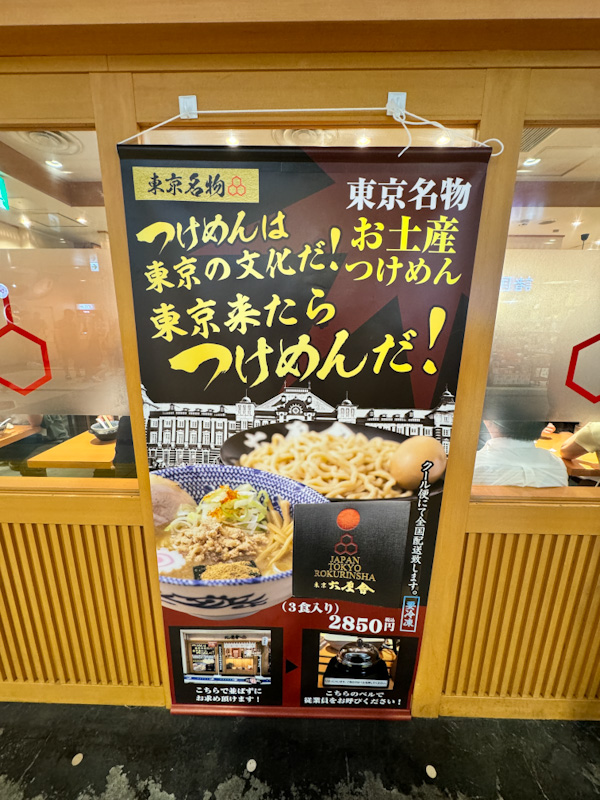
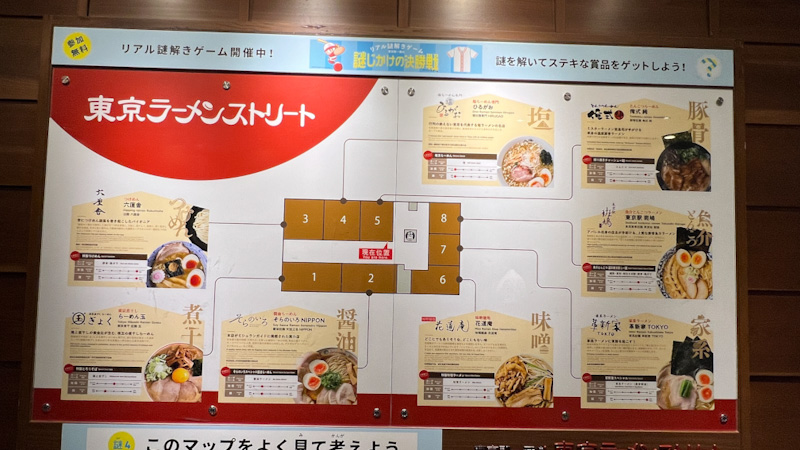
Nestled in the heart of Tokyo, Rokurinsha stands as a beacon for ramen enthusiasts, particularly those in search of the perfect tsukemen. This isn’t just another ramen joint; it’s the place that many locals credit with putting tsukemen on the culinary map. If you’re wondering what all the fuss is about, you’re in for a treat.
While Rokurinsha has spread its wings with a few branches, their Tokyo Station location on Ramen Street is a godsend for travelers. Tucked away in this bustling transportation hub, it offers a moment of culinary bliss amidst the chaos of travel. It’s the perfect spot to fuel up before (or after) your Tokyo adventures.
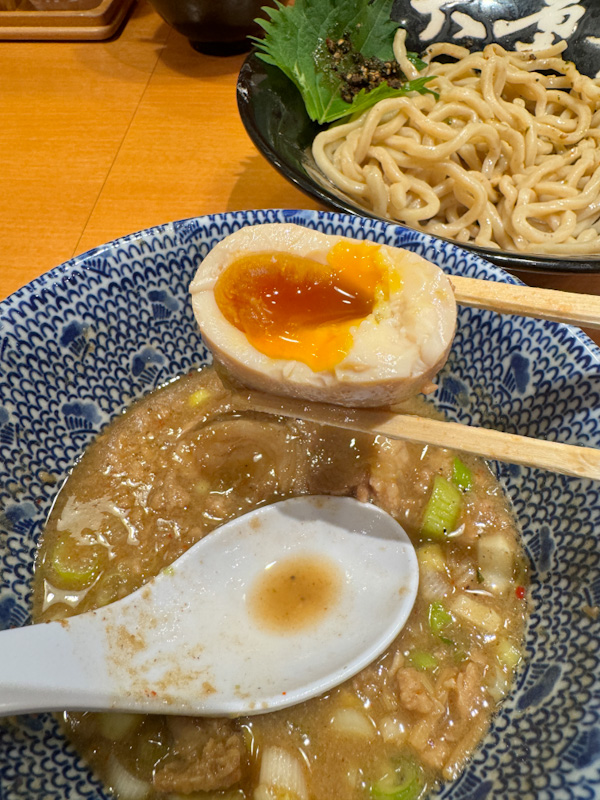
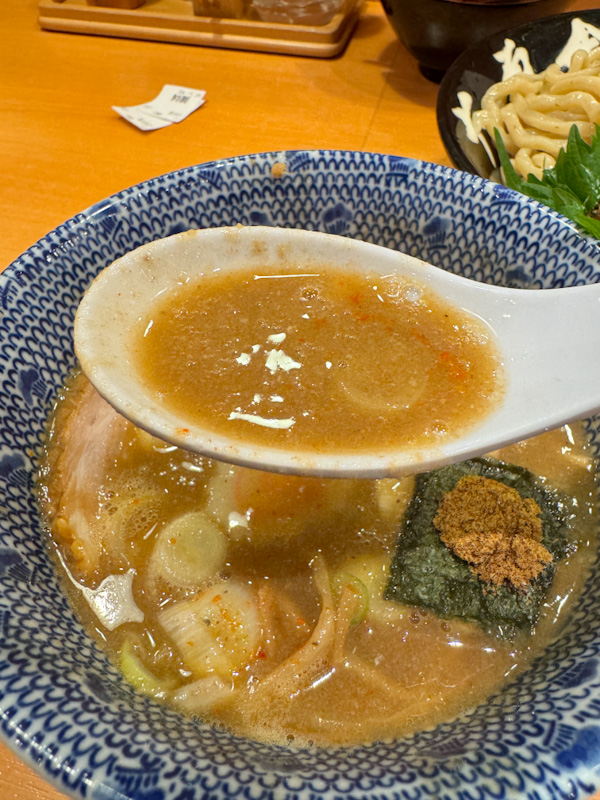


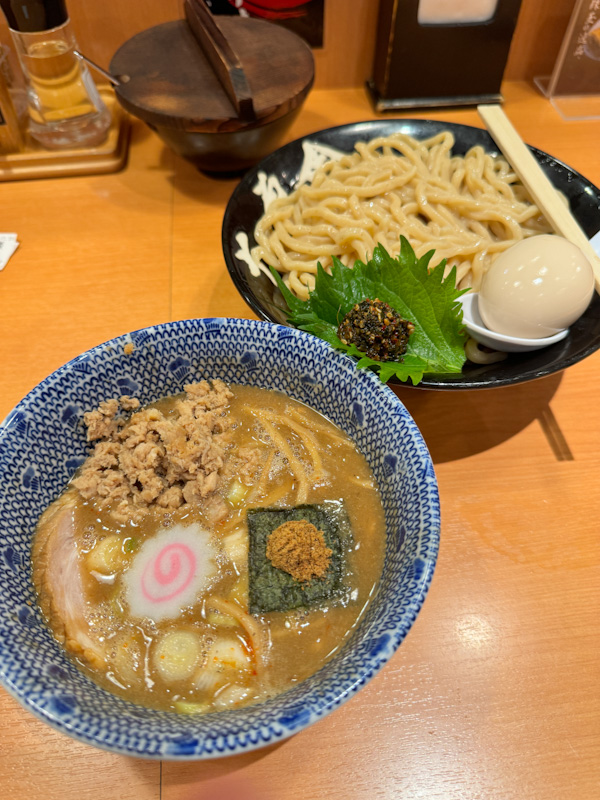
Tsukemen: 90/100
Noodles: 35/35
These noodles are a true delight – smooth and thick, they perfectly embody the concept of “mochi mochi”. Each bite is a journey through firmness, chewiness, and springiness, reminiscent of the beloved mochi texture. Served with a slight chill, they carry a wholesome wheat taste, with just a whisper of egg in the background. It’s the kind of noodle that makes you appreciate the craft behind it.
Soup: 30/35
What sets Rokurinsha apart is their masterfully crafted dipping broth. Imagine a symphony where pork bone, chicken, and seafood flavors play in perfect harmony, each note distinct yet blending seamlessly. As with all tsukemen, this soup is not your average ramen broth – it’s a dipping sauce that takes saltiness to new heights. But don’t let that deter you. This sauce is a umami bomb, with a sharp, unmistakable bonito flavor that hits you upfront, followed by a savory depth that lingers long after each bite. It’s intense, but that’s exactly what you want in a tsukemen.
Meat: 15/20
The meat here comes in two forms, each bringing something unique to the table. First, we have the classic chashu – medium-thick slices that are a testament to slow cooking. They’re soft, tender, and juicy, with a strong marinade that stands up well to the other bold flavors in the dish. It’s salty with a savory-sweet body that makes you want to savor each piece.
Then there’s the marinated minced meat, which I must admit, left me a bit perplexed. It’s soft, almost too soft, seeming to disintegrate as you chew. There’s an unexpected powdery texture that’s hard to place, but despite this quirk, it manages to taste pretty good overall.
Toppings: 10/10
Thin strips of bamboo shoots, seaweed, green onion, fish cake, and meat floss all mingle together, ensuring that each dip of noodles brings a rich tapestry of tastes to your palate.
But the real star of the show? The yuzu pepper paste. Served alongside the noodles, it’s a game-changer. Mildly spicy yet refreshingly citrusy, it adds a bright note that cuts through the richness of the other components. Fair warning: you’ll likely find yourself asking for more of this addictive condiment.
Summary
A benchmark for Tokyo-style tsukemen — thick, chewy noodles meet a dense, pork-and-fish broth that’s concentrated without being cloying. What stands out is the dipping sauce’s balance: rich, umami-packed, and warmly savoury, yet not overwhelmingly salty. The toppings are classic and purposeful — chashu that’s tender and fatty, bamboo shoots with the right crunch, and negi for freshness. This bowl doesn’t just deliver on texture and flavour intensity; it sets the standard.
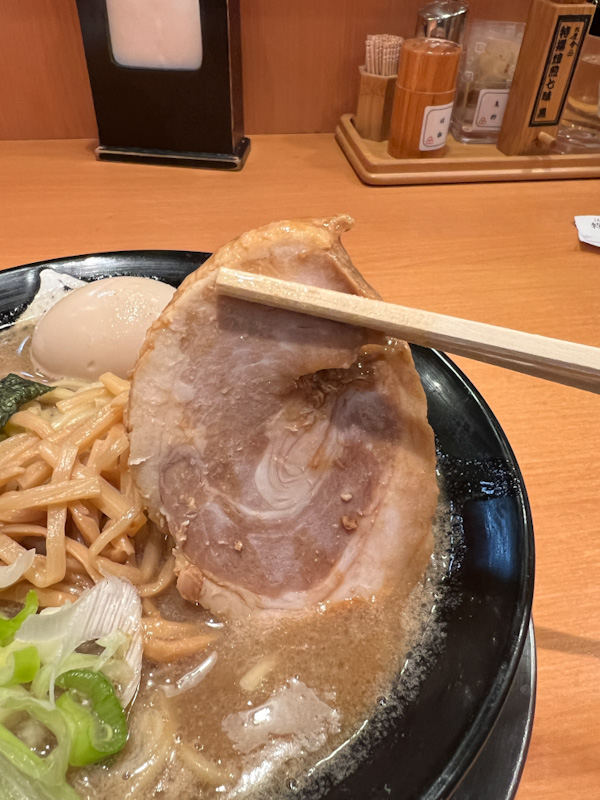
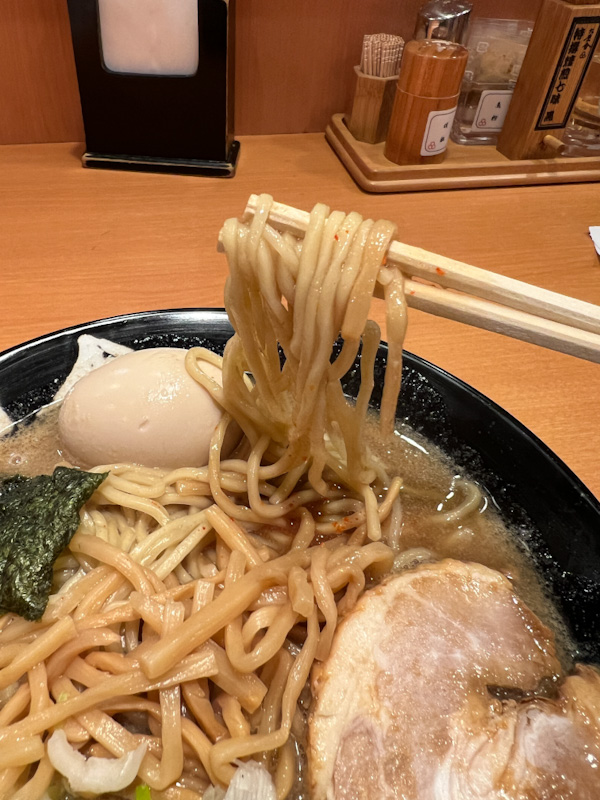

Normal Ramen: 70/100
Noodles: 25/35
This soup version takes a different route with its noodles – medium-thick and straight, they offer a firm texture that gives a clean, snappy bite. It’s satisfying in its own right, but there’s something curious about the taste. While generally average, there’s an unexpected hint of stir-fried flavor that makes you pause and wonder. It’s not unpleasant, just… intriguing.
Soup: 25/35
Where the tsukemen sauce leaned heavily into bonito territory, this dark-colored broth marches to a different drum. Here, the shoyu takes center stage, its salty profile pronounced against a savory, meaty backdrop. It’s rich and full of flavor, no doubt about that. But there’s a slight greasiness that lingers, adding a layer of indulgence that might be a bit much for some palates.
Meat: 15/20
The chashu here is a familiar friend – those medium-thick slices that speak volumes about the care taken in their preparation. Each piece is a tender, juicy morsel that yields easily to your chopsticks. The marinade is bold, refusing to be overshadowed by the soup’s strong personality. It’s a delightful dance of salty and savory-sweet that makes you want to savor every bite, perhaps even saving a piece for last.
Toppings: 5/10
The supporting cast here mirrors what you’d find in the tsukemen version. Thin strips of menma, precisely diced negi, sheets of nori, and a marinated egg all make an appearance. While they don’t bring anything new to the table, they play their roles well, adding texture and complementary flavors to round out the bowl.
This ramen might not reach the heights of its tsukemen cousin, but it holds its own with a distinct personality. It’s a bowl that tells a different story – one of familiar comfort with a few surprising twists along the way.
Summary
A tidy and elevated take on classic ramen. The noodles are springy and perfectly al dente, while the broth – a blend of pork, chicken, and seafood – hits that sweet spot of clean savouriness with just enough depth. Chashu remains tender and juicy, and the garnishes (menma, negi, seaweed) are well-balanced, never overplaying their roles. It’s a refined, no-waste bowl that nails the essentials while bringing the attention to detail you’d expect from Rokurinsha.
DISCLAIMER
One man’s meat is another man’s poison.
Find out more about our palettes and how we evaluate our ramen here. 😉

